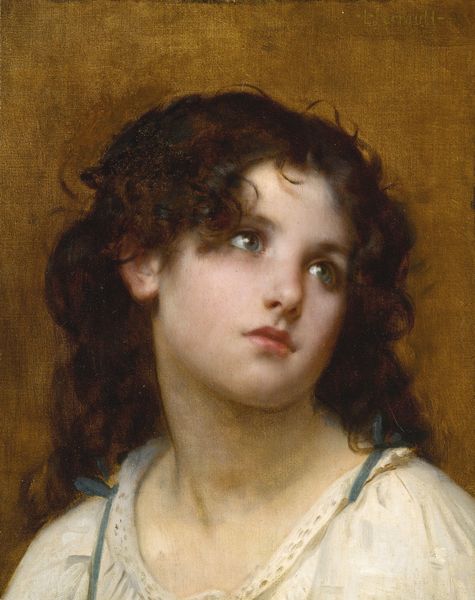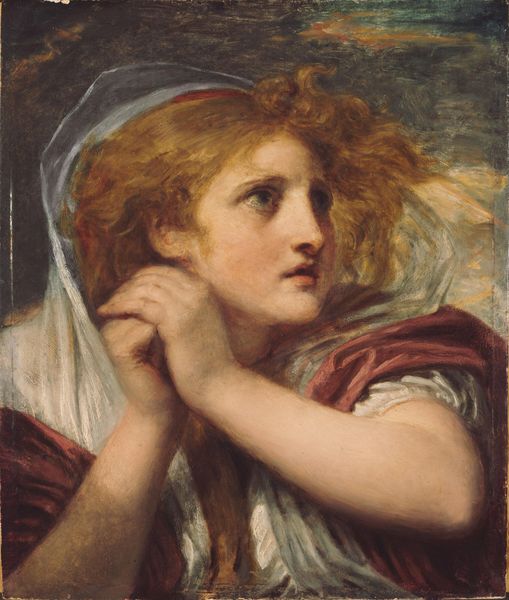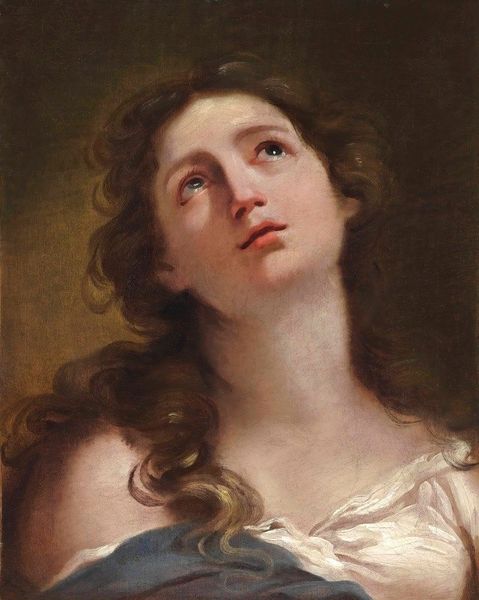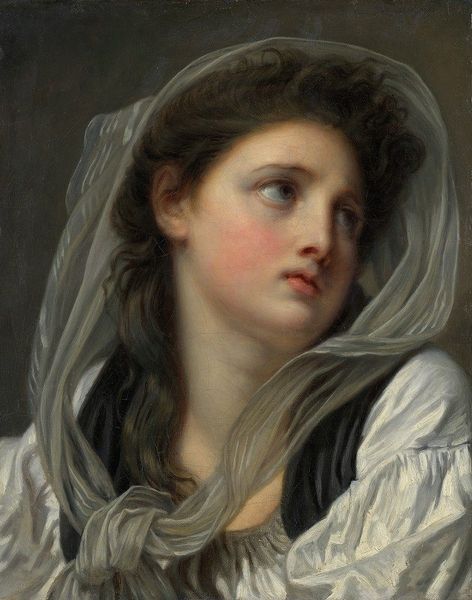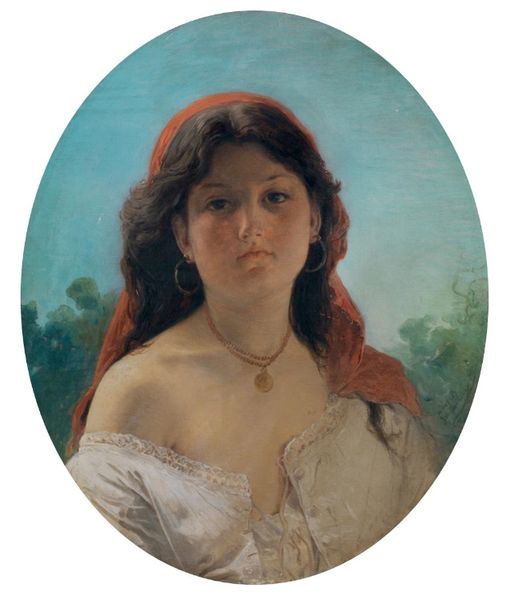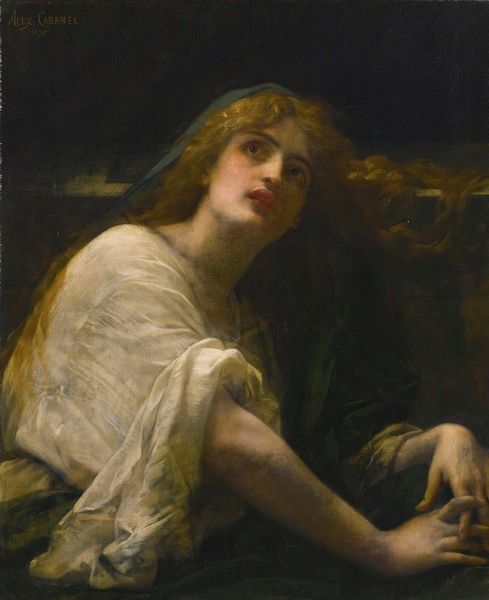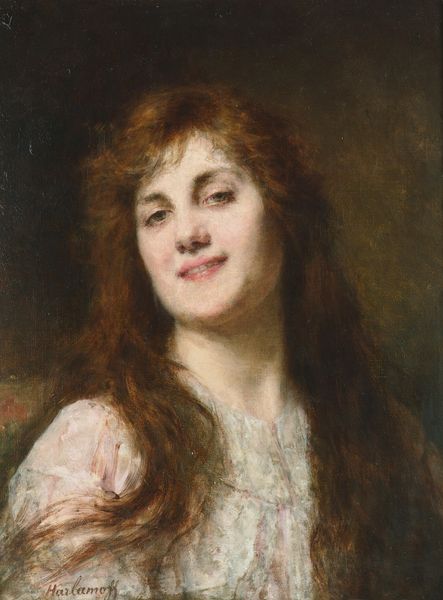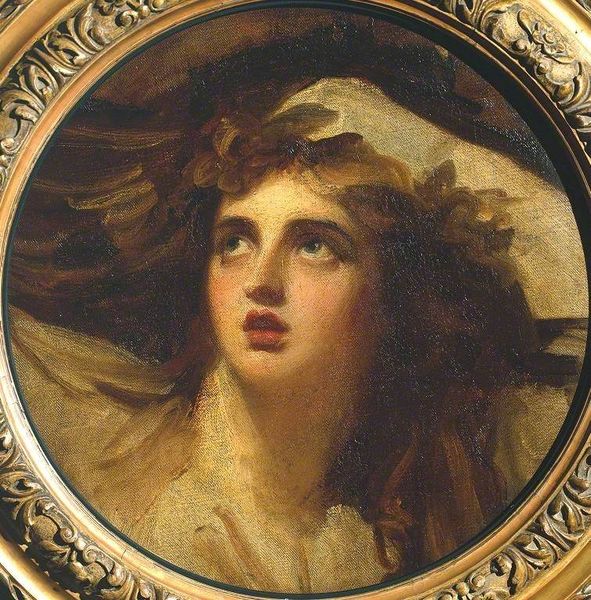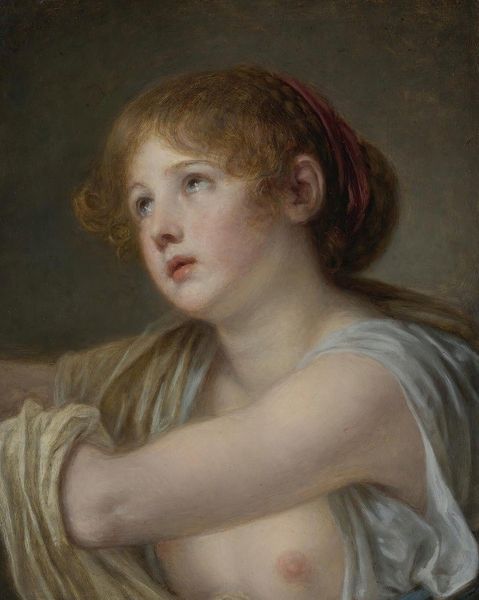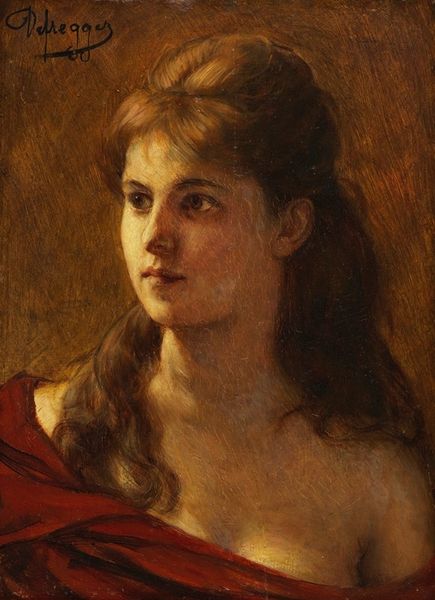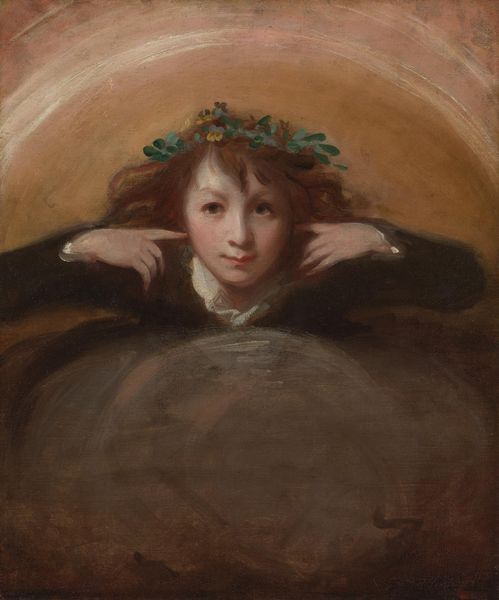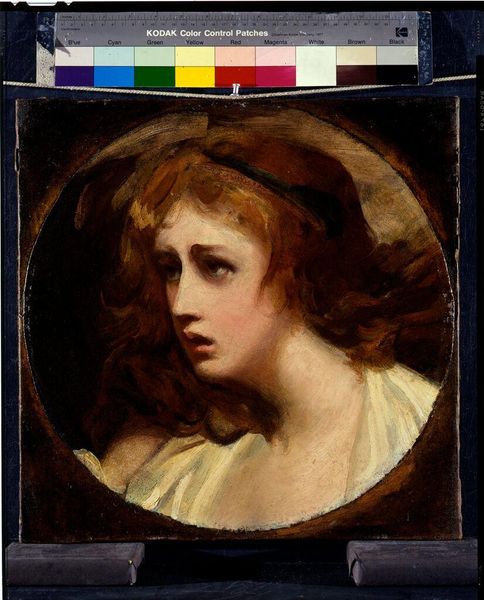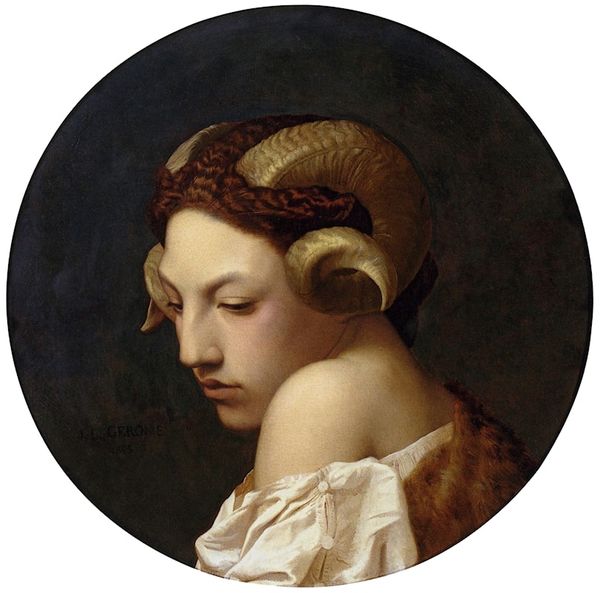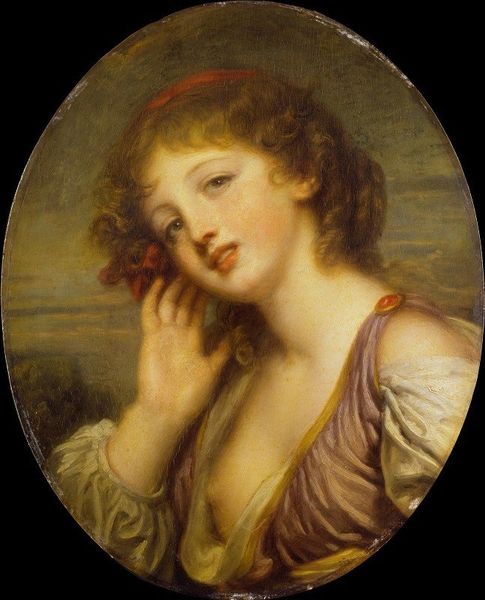
Dimensions: support: 460 x 460 mm frame: 672 x 672 x 57 mm
Copyright: CC-BY-NC-ND 4.0 DEED, Photo: Tate
Editor: Here we have George Romney's "Lady Hamilton as Cassandra," held at the Tate. What strikes me is the raw emotion in her upward gaze – almost a frantic appeal. What do you make of it? Curator: Isn't it marvelous? Romney captures a moment of intense vulnerability. I see the theatricality of Emma Hamilton, the model and muse, blending with the tragic weight of Cassandra's prophecy, you know, cursed to see the future but never be believed. It’s as if she's caught between performance and true feeling. Editor: So, the painting is both about Emma and Cassandra? Curator: Precisely! A layering of identities. It makes you wonder, doesn't it, about the price of being seen, of performing a role, and the potential for genuine suffering beneath the surface. Editor: That gives me a lot to think about – the performance and the person. Thanks! Curator: My pleasure. It’s these layers that keep me coming back.
Comments
tate 6 months ago
⋮
http://www.tate.org.uk/art/artworks/romney-lady-hamilton-as-cassandra-n01668
Join the conversation
Join millions of artists and users on Artera today and experience the ultimate creative platform.
tate 6 months ago
⋮
Romney is best known for his serene portraiture, but had ambitions to be a history painter. Throughout his career he designed innumerable grand, turbulent compositions which usually remained as sketches. He frequently used the lovely Emma Hart, later wife of Sir William Hamilton, British Envoy at Naples, as a model for 'fancy' pictures in which she assumes a variety of characters. In this sketch she appears as Cassandra, daughter of Priam, King of Troy, who was given the power of prophecy. Romney evokes her ravings as she pronounces the doom of the city after its ten-year siege by the Greeks. The finished full-length was engraved in 1795, but is now lost. Gallery label, August 2004
